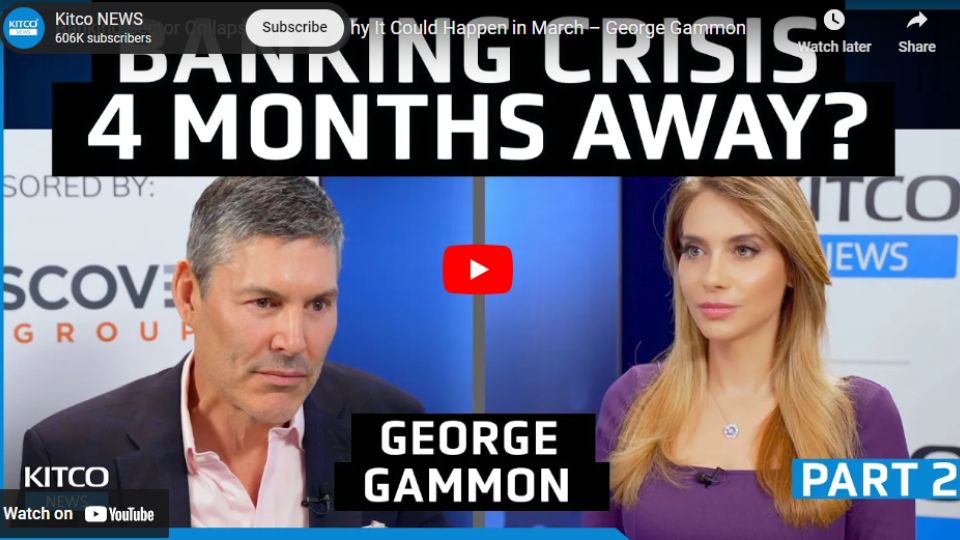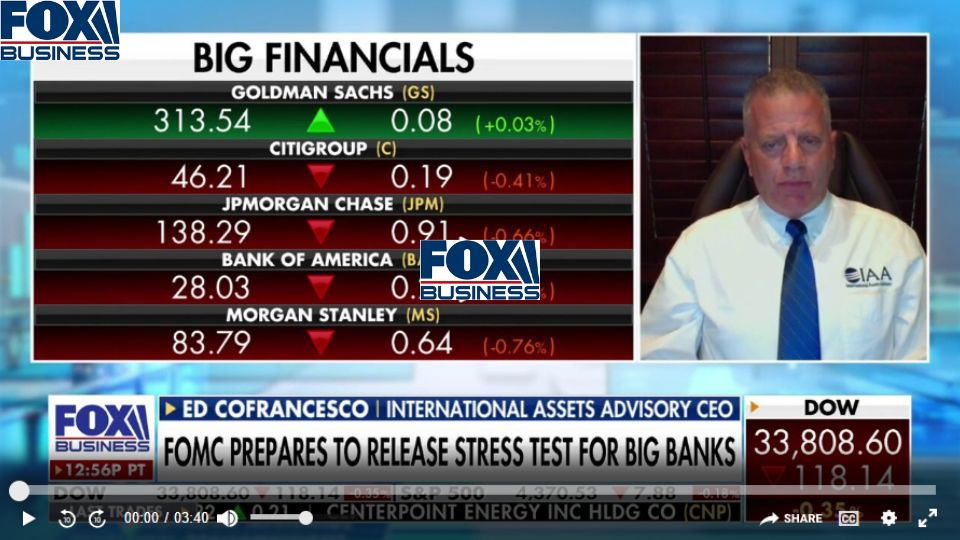- Everyone thinks that we're past the banking crisis. The Fed went from lending $60 billion to unstable banks in March to over $100 billion. "But the utilization of the BTFP is almost twice as much today than it was during the height of the banking crisis in March of 2023," Gammon told Michelle Makori, Lead Anchor and Editor-in-Chief at Kitco News, on the sidelines of the New Orleans Investment Conference.
- The Federal Reserve's emergency liquidity program, known as the Bank Term Funding Program (BTFP), is a financial support initiative launched by the Federal Reserve in response to banking system stress felt after the collapse of Silicon Valley Bank (SVB) in March.
(Kitco News) While many analysts have downgraded a banking crisis scenario, George Gammon, investor, and macroeconomics expert, warned that the banking sector could collapse as soon as March of next year.
The reason for his concern is the Federal Reserve's emergency liquidity program, known as the Bank Term Funding Program (BTFP). It is a financial support initiative launched by the Federal Reserve in response to banking system stress felt after the collapse of Silicon Valley Bank (SVB) in March.
The primary goal of the BTFP is to support the banking system's stability and ensure banks have adequate liquidity. Under the BTFP, banks can borrow from the Federal Reserve for a term (often one year) using high-quality securities as collateral. These securities typically include U.S. Treasury bonds, mortgage-backed securities, and other government-backed debts.
The problem for Gammon, however, is the extent to which the program is being used. Since March, the Fed went from lending $60 billion to over $100 billion.
"Everyone thinks that we're past [the banking crisis]," Gammon told Michelle Makori, Lead Anchor and Editor-in-Chief at Kitco News, on the sidelines of the New Orleans Investment Conference. "But the utilization of the BTFP is almost twice as much today than it was during the height of the banking crisis in March of 2023."

If the Fed's program is being utilized by banks more in November than it was in March, there's a lot more risk within the system now than before, he added.
This comes when the rating agency Fitch also flagged U.S. regional banks, stating that it forecasts continued challenges into 2024. According to Fitch's latest report, regional banks that are smaller in scale or heavily focused on commercial loan growth are expected to face disproportionate pressure next year.
Making things more precarious is the March 11 expiration date on the Fed's BTFP program since it is not certain that the Fed will choose to renew the program. "If you just 'rug pull' that BTFP, you're going to have the exact same scenario that we would have had in March if the Fed wouldn't have rolled it out to begin with," Gammon pointed out.
Powell's dilemma
Federal Reserve Chair Jerome Powell will face a dilemma around whether or not to extend the program in March, said Gammon.
"Powell is trying to reduce liquidity in the markets to bring down inflation. What would happen to the rate of inflation if you let those banks fail? We would see disinflation. We would see a 1930s-type scenario. I'm not saying this is what he wants to do or will do, but I'm saying this is something that people need to think about," Gammon stated.
For Gammon's base-case scenario around what the Fed will decide on come March and beyond, watch the video above.
Gammon also weighed in on JPMorgan Chase CEO Jamie Dimon's decision to sell one million of his JPMorgan stock come the new year. Gammon described the announcement as "a huge red flag" in terms of the future health of the banking sector and the U.S. economy. To get his take on what's driving Dimon, watch the video above.
Story by Anna Golubova - Michelle Makori - Redacted shorter to keep to important points and bullet points added by HGG https://www.kitco.com/news/?utm_source=KitcoNewsArticles&utm_medium=KitcoNewsButton&utm_campaign=KitcoNews




